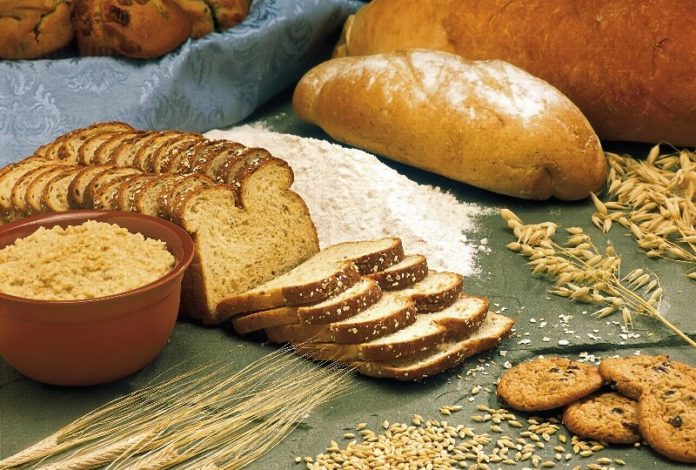Whole grains are a “superfood” that you should be adding more of to your daily diet. They contain many essential nutrients that the body needs, and come with a wide range of health benefits as well.
What are Whole Grains?
The kernels (seeds) of grains consist of three parts – the bran (outer layer); the endosperm (interior) and the germ, which is responsible for its reproduction. Typically, when grain is refined, only the soft endosperm is retained since it is the most digestible, while the bran and the germ are thrown away.
Unfortunately, many important nutrients such as B-vitamins, minerals, fiber and heart-friendly oils are also lost. This is why foods made with refined grains have to be “enriched”, meaning that iron and B-vitamins such as folic acid, riboflavin and niacin, are added afterwards.
On the other hand, foods labeled “whole grain” are those in which all the parts of the grain kernel are included. This makes them more nutritious since they retain all the vitamins and minerals, in addition to the protein and carbohydrate content of the endosperm.
Why Eat Whole Grains?
Here are ten health benefits of eating whole grains:
Rich in Fiber: According to the American Heart Association, adults should have a total daily fiber consumption of 25 to 30 grams from food. However, studies show adults eat only half that amount.
Adding more whole grain foods to your diet can help you bridge this gap. For example, if you eat a half-cup of brown rice, you’ll get 5.5 grams of fiber, while the comparable amount of white rice has only two grams.
If you want to add more fiber to your diet, you should focus on bulgur (cracked wheat), barley and oats. These are among the whole grains that have the highest fiber content.
High in Nutrients: In addition to the nutrients we’ve already discussed in the previous section, whole grains contain essential minerals such as iron, zinc, manganese and magnesium. They also have compounds with anti-oxidant properties, such as lignin and phytic acid, as well as sterols, lignans and other disease-preventing compounds.
Reduces Risk of Heart Disease: Two studies from the Harvard School of Public Health confirmed that eating more whole grains could reduce your risk of developing heart disease. One study said that consuming as little as 15 grams of whole wheat daily could reduce your heart disease risk by fifteen percent. Another study found that three or more servings a day could reduce your risk by as much as twenty to thirty percent.
Reduces Risk of Type-2 Diabetes: A 2018 study published in the Journal of Nutrition found that participants who ate the most whole grains saw a substantial decrease in their diabetes risk compared with the group who consumed the least. Male participants saw their risk reduced by 34% and female participants, 22 percent.
Reduces Risk of Stroke: An analysis of the evidence in observed studies regarding the association between whole grain intake and risk of stroke found that higher intake provided a protective effect against stroke. The antioxidants found in whole wheat may also help reduce the risk for the most common type of stroke, ischemic stroke.
Helps You Maintain Healthy Weight: A study showed that participants who ate whole grains equivalent to the daily-recommended requirement found that their resting metabolic rate increased. This increased the amount of calories they lost per day by an additional 100 calories, which is equivalent to a thirty-minute brisk walk.
Reduces Inflammation: Chronic inflammation can increase the risk for illnesses such as cancer, heart disease and type 2-diabetes. Studies suggest that increasing your intake of whole grains may reduce inflammation and lower the risk of dying from related chronic conditions.
Reduces Colorectal Cancer Risk: According to a 2017 joint study by the American Institute for Cancer Research and the World Cancer Research Fund, eating whole grains in 3 servings each day can reduce by 17% the risk of developing colorectal cancer. This is the third most common cancer among both male and female Americans, with more than 370 cases diagnosed daily.
Helps Improve Digestion: The high fiber content of whole grains helps promote digestive health by ensuring that your bowel movements are regular. It also provides bulk to your stool.
In addition, whole grain is rich in oligosaccharides. These are a type of carbohydrate that is difficult for the body to digest, so they end up in the colon where they take on the role of a prebiotic.
Prebiotics are substances that act as food supply for the gut bacteria. These bacteria play a lot of vital roles in your body, ranging from protection against harmful fungi and bacteria to helping regulate inflammation.
Reduces Risk of Premature Death: A study conducted at the Harvard School of Public Health found that adding more whole grains to your diet could lower premature death risk. The researchers conducted a meta-analysis of cohort studies covering associations between death from all causes, cancer and cardiovascular disease, and consumption of whole grains.
According to their findings, those who ate more whole grains were less likely to die prematurely from all causes. In particular, there was a strong association between whole grain intake and lower risk of dying from heart disease.
How Much Should I Eat?
According to the 2015-2020 Dietary Guidelines for Americans, you should eat at least six ounce-equivalents of grains per day (assuming a daily consumption of 2000 calories). At least half of your grain consumption (three ounce-equivalents) should be whole grains.
Ounce equivalent means that one serving is equal to one ounce or 28 grams of a ready-to-eat whole grain food. One serving, for instance, can be:
- One slice of whole wheat bread
- Half cup of cooked brown rice or cooked cereal or pasta
- One ounce dry pasta
- One cup of ready-to-eat cereal
Alternately, if you are eating food in which whole grains are included in the ingredients, you should make sure that at least half of the total weight is whole grains. One easy way to do this is to look for products that bear the Whole Grains Stamp. These labels classify products into 100% Whole Grains; 50% Whole Grain and those which contain at least 13 grams per serving.








